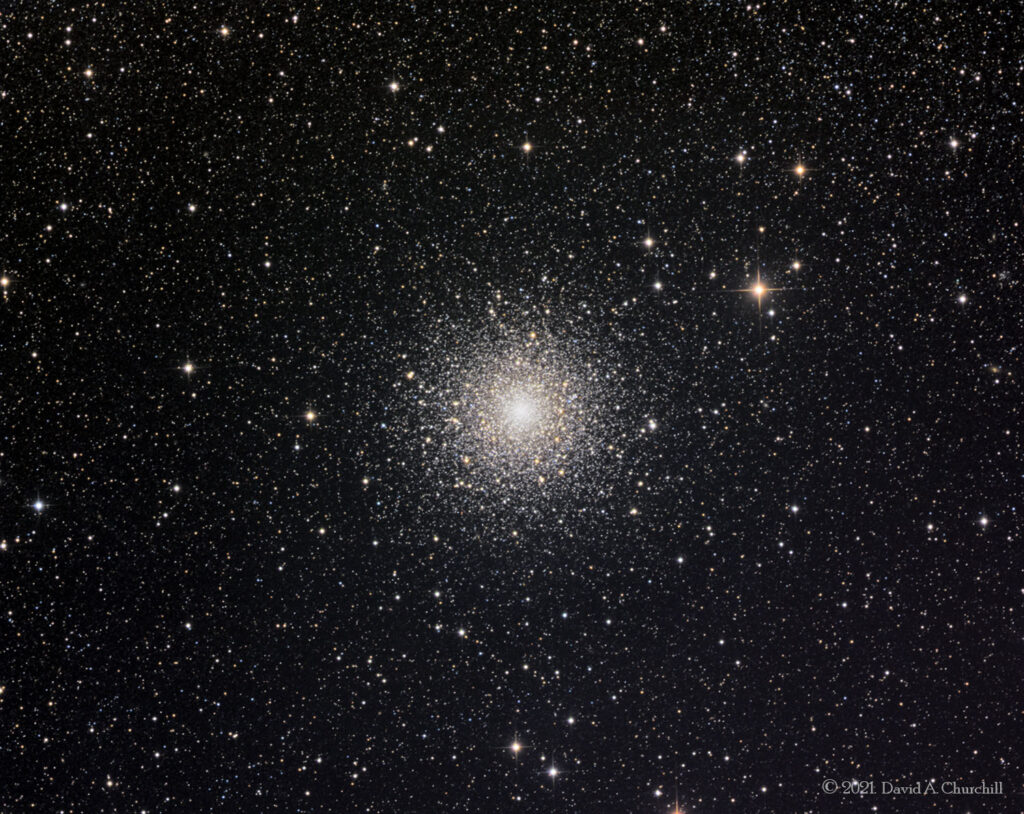NGC 362 (Caldwell 104)
Globular Cluster, Tucana
- Description
- Technical
- Links
NGC 362 (also known as Caldwell 104) is a globular cluster located in the constellation Tucana in the Southern Hemisphere, slightly north of the Small Magellanic Cloud. It was discovered on August 1, 1826 by James Dunlop. It is visible to the naked eye in dark skies, and is an impressive sight in a telescope, although it is somewhat overshadowed by its larger and brighter neighbour 47 Tucanae. The stars of NGC 362 have an average metallicity higher than the stars in most globulars. This implies that NGC 362 is a relatively young globular cluster. It also has an overabundance of binary stars, and an exceptionally tight core 13 light-years in diameter. The orbit of NGC 362 is highly eccentric, taking it to within 3,260 light-years of the galactic center.
Telescope: Planewave CDK17 (FR) f4.5
Mount: Astro Physics 1600GTO
Camera: QHY16200A/ Integral FW
Guider: Agena Starguide II / SBIG STi
L: 36×5 mins = 180 mins, R: 18×5 mins = 90 mins, G: 18×5 mins = 90 mins, B: 18×5 mins = 90 mins
Plus for the core:
L: 15×2 mins = 30 mins, R: 15×2 mins = 30 mins, G: 15×2 mins = 30 mins, B: 15×2 mins = 30 mins
Total Imaging Time: 8h 30m
Data Imaged remotely over 3 nights during November 2021.
Imaged from Observatorio El Sauce, Chile, in partnership with Fred Espenak.
Data acquisition & Processing by David Churchill.
None

